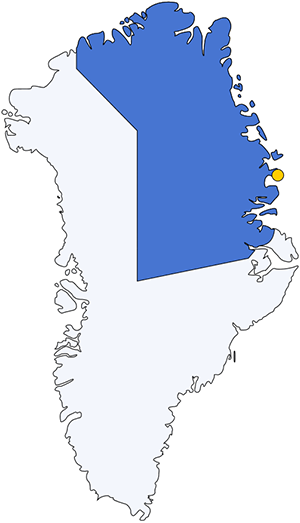 |
Metadata
|
 |
Zackenberg GEM ZERO
Integrated CryoNet Cluster Information
Stations in This Site
This site is comprised of the following stations:
- A.P. Olsen Ice Cap - CryoNet Station
- Zackenberg Research Station - Contributing Station
Broad Research Focus
The objective of the station is to facilitate ecosystem research in the High Arctic. According to the framework programme of Zackenberg Ecological Research Operations (ZERO) this includes:
- Basic quantitative documentation of ecosystem structure and processes
- Baseline studies of intrinsic short-term and long-term variations in ecosystem functions
- Retrospective analyses of organic and inorganic material to detect past ecosystem changes
- Experimental studies enabling predictions of ecosystem responses to Global Change
Integrated Approach
Gradients, feedbacks and forcings are studied across the ecosystem components. From 2017, dedicated means are available for cross-cutting applications based on cal/val of models and remote sensing using the in situ observations
Representativeness of the Cluster
pending
Cluster Facilities
Zackenberg Research Station provides accommodation facilities for 24 persons at a time. Besides, the station has several laboratories at disposal for guest scientists. An unmanned research house in Daneborg provides accommodation for 10 people at a time. The logistics staff can help with transport to/from Zackenberg/Daneborg and with transport in the local area.
Other Networks to Which This CryoNet Cluster Belongs
- Fluxnet, CALM, INTERACT, DEFROST, CENPERM, Page24, eSTICC, WGMS
Measurement Methods Used
- WMO Technical Regulations
- UNESCO
Other relevant measurement method documents:
Each of the five long term monitoring projects at Zackenberg (BioBasis, ClimateBasis, GeoBasis, GlacioBasis and MarineBasis) operate their measurement operations according to the procedures documened in their respective field manuals, available online at zackenberg.dk
Data Information
- Are the data quality controlled? yes
- How are the data accessible? HTTP (web)
- Data availability (may depend on the variable measured): in near real-time, delayed less than one year
Publications
Measurements
The measurements made at Zackenberg GEM ZERO are listed in the following tables. This is a combination of measurements made at the stations within the site, where the start and end years in the tables are the earliest and latest years of measurement. (Note: If End Year is blank, measurements are ongoing.)
Cryosphere Measurements
| Atmosphere Measurements
|
Measurement Notes and Other Measurements
| Category | Description or List |
|---|---|
| Glacier | Area is not measured on the ground but from optical remote sensing |
| Atmosphere | Continuous half-houly flux measurements of CO2 since 2000 Continuous hourly flux measurements of CH4 since 2006 Measurements from glaciated areas since 2008. Continuous half-houly flux measurements of CO2 since 2000 Continuous hourly flux measurements of CH4 since 2006 Measurements from glaciated areas since 2008. |
| Hydrology | Measurements of river flow and river water chemistry since 1996. |
| Ecology | As an integrated activity at Zackenberg the long-term monitoring programme, Zackenberg Basic, was initiated in 1995 and fully implemented for the terrestrial part of the ecosystem in 1996. In 2003, the programme was supplemented with a sub-programme, MarineBasis, taking care of the marine environment. In 2008, it was supplemented with another sub-programme focusing on glaciers (GlacioBasis). The objective of the programme is to provide long time series of data on the natural innate oscillations and plasticity of a high Arctic ecosystem. This is accomplished through monitoring of selected biotic parameters and elements (BioBasis and MarineBasis) as well as climatic (ClimateBasis and GlacioBasis) and other abiotic (GeoBasis and MarineBasis) parameters and elements throughout the year on a long-term basis. |




The study area around Zackenberg is in the zone of continuous permafrost with an active layer thickness varying from 20 to 100 cm. A major geological flexure and thrust zone dissecting Zackenbergdalen (note: 'dalen'= 'the valley'), the core study area, separates Caledonian gneiss bedrock (to the west) from Cretaceous sandstones and Tertiary basalts (to the east). The margin of the Greenland Ice Sheet is located c. 60 km to the west of Zackenberg Research Station, and the Zackenberg river receives meltwater from the A.P. Olsen Ice Cap, the largest peripheral ice mass in the area. Clavering Island located across Tyrolerfjord hosts several more glaciers including Freya Glacier.
The mass balance of Freya Glacier on Clavering Island is monitored by Zentralanstalt für Meteorologie und Geodynamik (ZAMG), Vienna.